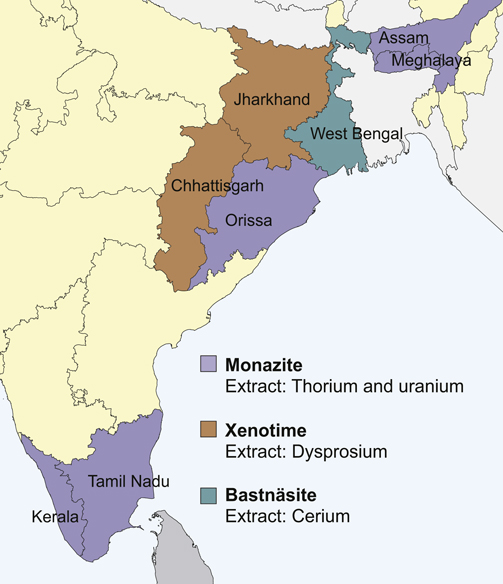IREL told to stop rare earth sales to Japan, focus on local needs

IREL (India) Limited
1. Establishment & History
Incorporated as Indian Rare Earths Limited on 18th August 1950.
First unit: Rare Earths Division (RED), Aluva, Kerala.
Became a Government of India Undertaking under Department of Atomic Energy (DAE) in 1963.
Took over atomic mineral mining operations at:
Chavara, Kerala
Manavalakurichi (MK), Tamil Nadu
2. Current Status & Operations
Mini Ratna Company under DAE.
Along with KMML (Kerala State PSU), it mines and processes beach sand minerals from placer deposits.
Only entity in India processing monazite to produce Rare Earth (RE) compounds.
3. Rare Earth Elements (REE) Scenario in India
Surplus in Light Rare Earth Elements (LREE):
Lanthanum, Cerium, Neodymium, Praseodymium, Samarium.
Deficit in Heavy Rare Earth Elements (HREE):
Dysprosium, Terbium, Europium (not available in extractable quantities).
4. Government Initiatives
Focus on capacity building to utilize surplus LREE effectively.
Rare Earth Elements (REEs) Characteristics and Sources
1. Key Properties of REEs
High density
High melting point
High conductivity
High thermal conductance
2. Presence of Thorium & Uranium
Some REE minerals contain thorium and uranium in varying amounts.
These elements are not essential to the mineral’s composition.
3. Principal Sources of REEs
Bastnaesite (fluorocarbonate) – Found in carbonatites & igneous rocks.
Xenotime (yttrium phosphate) – Common in mineral sand deposits.
Loparite – Occurs in alkaline igneous rocks.
Monazite (phosphate) – Main source in India for REEs & thorium.
REEs are also recoverable as by-products from:
Phosphate rock
Spent uranium leaching
4. Monazite in India
Primary source of REEs & thorium.
Chemical composition: Complex phosphate of (Ce, La, Nd, Th, Y) PO₄.
Naturally radioactive due to thorium content.
